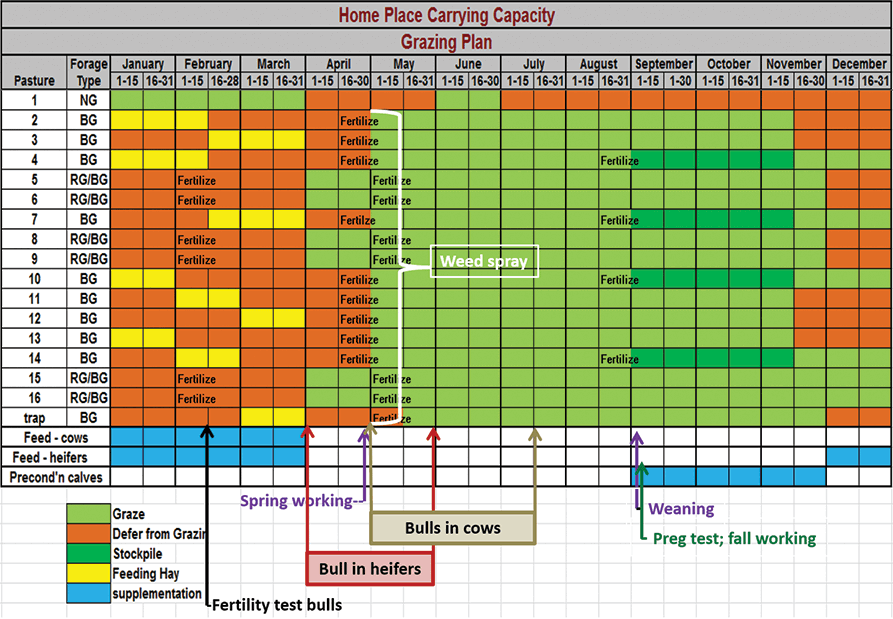Spring will arrive in April if not sooner. Therefore, now is the time to develop your pasture management plan to achieve the best possible outcomes this year. The purpose of the pasture management plan is to think through the specific management practices required to achieve the expected level of production for the growing season ahead. There are several aspects included in the specifics location, timing, quantity of product, costs and efficacy. Each is very important; all ultimately impact the final results. The plan should take into consideration the management history of each unit, condition of pastures, productivity potentials and expectations of pastures, use (grazed or hayed) of pastures, and expected environmental conditions for the forthcoming growing season.
To begin, a producer should be sure the stocking rate accurately reflects the carrying capacity for each property and be prepared to perform the level of management required to maintain these livestock numbers throughout each season. He or she should be familiar with production capabilities of the soils and forages, seasonal growth curves by forage type, and the best management practices for the pasture types in his or her region. Immediately prior to creating a pasture management plan, a producer should perform an overall property assessment and review the previous year’s plan so he or she is knowledgeable of current pasture conditions (stand cover and vigor, soil nutrient status, management issues or concerns) and the previous year’s information (rainfall patterns, management activities, and pasture use and production).
Following is a stepwise process to create a pasture management plan for an operation.
- Identify the goals for each property and the objectives with desired outcomes for each pasture unit.
Goals would include the kind and quantity of livestock to be pastured, amount of harvested forage to be produced, the time frame these activities will occur, and any issues to be actively addressed. Objectives would include the specifics on how the goals will be accomplished (i.e., specifics of fertilizing introduced pastures, establishing forage crops, herbicide applications, pasture recovery and renovations). - Create a spreadsheet for each property in calendar form.
It should include an accurate pasture inventory (acres, forage type) down the far left column and the months of the year across the top row. The idea is to create a diagram that captures all the management activities for the year in one place. - On the spreadsheet, indicate the annual pasture management activities that are routinely anticipated to occur and the timing of each.
- Indicate the annual livestock management activities that routinely occur; the timing of the pasture management activities should correlate with the livestock management practices.
- Indicate other management practices needed to address specific issues that are not routinely planned.
Examples include perennial pasture establishment, targeted brush control treatment and prescribed burns. - Indicate any special dates to be aware of that need to be worked into the schedule and planned around.
These include family gatherings, conferences, bull sales, etc. - Add other noncritical activities to be accomplished if time allows.
Examples include clearing fence lines, cutting cedar trees, individual plant/area treatment of woody or weedy species. - Review diagram and determine if adjustments in event timings need to be made to allow for all critical activities to occur.
The end result desired is often a calendared spreadsheet as illustrated in Figure 1.
Figure 1.

It has been said that a plan itself is of little value as it will change considerably from the first draft, but it is the thought process of creating a plan that is important. Having experienced the process of developing a pasture management plan, a producer is better prepared to implement the critical management practices in a timely manner and adapt to the actual seasons and unforeseen situations. The purpose of a pasture management plan is to aid the producer in achieving the identified goals for the operation and making better, timelier management decisions. It also provides an excellent template to track actual management activities as they occur throughout the year.


Thanks for your knowledge.